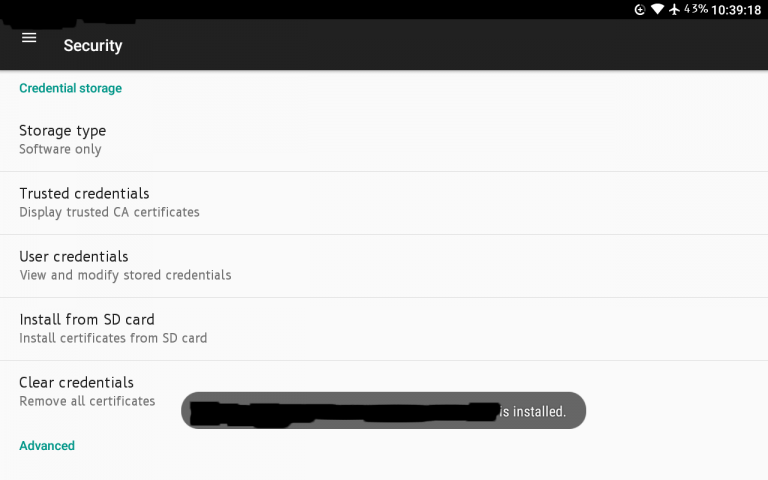
- Convert enterprise access point to wpa2 manual#
- Convert enterprise access point to wpa2 windows 10#
- Convert enterprise access point to wpa2 password#
Do not use extended ASCII characters, control ASCII characters, or ASCII characters that you compose with the Alt key on your keyboard.
Convert enterprise access point to wpa2 password#
The user name and password are case-sensitive. Enter the access point’s user name and password.Enter the IP address that is assigned to the access point.Launch a web browser from your computer.

Convert enterprise access point to wpa2 windows 10#
Windows 10 Professional Event Log - WLAN-Autoconfig Failure entry when attempting to connect to the wireless network.ĮAP Root cause String: Network authentication failed due to a problem with the user account Finally the Windows 10 event log has the error below - my current assumption is that Windows is either expectingĪ different client certificate to use to authenticate, not happy with the client certificate I have created or for some reason it is ignoring the client configuration to do 'Computer Authentication only' and not finding a certificate in the 'user' store. The Cisco Wireless Access point shows the initial wireless client association but shortly afterwards a disassociation. When the Windows 10 client attempts to connect there are no errors/entries in the pfSense Freeradius logs - there are no entries to show any attemptedĪuthentication request. Specify authentication mode - Computer Authentication Only Validate the server's identity by validating the certificate with the 'pfSense internalRootCA' certificate selected Use a certificate on this computer - Use simple certificate selection Authentication Type - Smart Card or other certificate
Convert enterprise access point to wpa2 manual#
Created a manual wireless network profile Windows 10 Wireless network configuration I believe Apple IOS devices may do this slightly differentlyĪnd supply certificates in a user context which may require further configuration, but for now I'm focussing on Windows 10 device/machine authentication.ĩ. I want to do device/machine based EAP-TLS authentication therefore with no 'user' involvement. 'The Subject Alternative Name (SubjectAltName) extension in the certificate contains the user principal name (UPN) of the user'. The only requirement I was unsure of was: The certificates meet these requirements. I have checked the Microsoft 'Certificate requirements when you use EAP-TLS or PEAP with EAP-TLS' document and believe the configuration and details in Exported the Windows 10 Desktop Client and imported into the 'Certificates - Local Computer - Personal Store' no certificate trust errors in the web browser when accessing the web interface.Ĩ. I also created a certificate from this CA for the pfSense web interface using this root CA and tested that the Windows 10 client is successfully Exported the CA root certificate and imported into 'Trusted Root CA store' on the Windows 10 Client. Configured Cisco Enterprise wireless access point to use the freeradius server with shared secret and created a SSID with WPA2 Enterprise.ħ. SSL Server Certificate - certificate selectedĦ. SSL Revocation List - internalRootCA Revocation List selected

Most settings left default (Type - Authentication, Port 1812 etc) Created a new interface for the Cisco Enterprise Wireless Access point to use Added a entry for the Cisco Enterprise Wireless Access point Created a new certificate for the Windows 10 Professional Client (machine/NETBIOS name is client001 in default workgroup not domain) Name with domain.local for the purpose of this internet post)Ĥ. (I went with this naming convention to support a future move to an internal domain - was this an incorrect decision ? I've replaced the real domain Existing pfSense router - Added FreeRadius3 packageģ. Windows 10 Professional client (standalone not domain)ġ. I have summarised below the steps I have followed, important bits of configuration and importantly windows event log error entry:

I'd really appreciate anyĪdvice on where I am going wrong which I think is most likely certificate related. I believe I have implemented the configuration correctly using a range of documentation and guides, but my initial testing with a standalone Windows 10 client is not going well. I am trying to use pfSense to support EAP-TLS with WPA2-Enterprise (machine/device authentication, not user authentication) for wireless clients using FreeRADIUSĪnd pfsense CA on my existing working pfSense server.


 0 kommentar(er)
0 kommentar(er)
